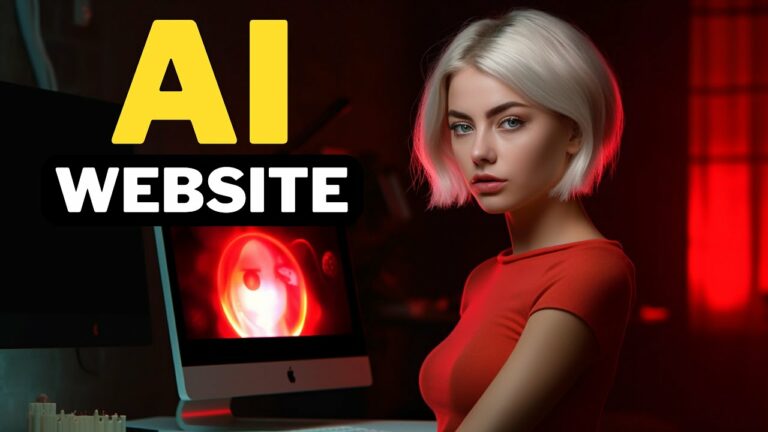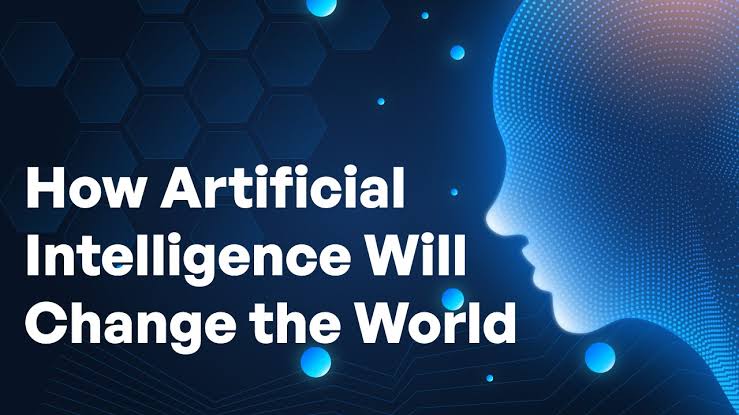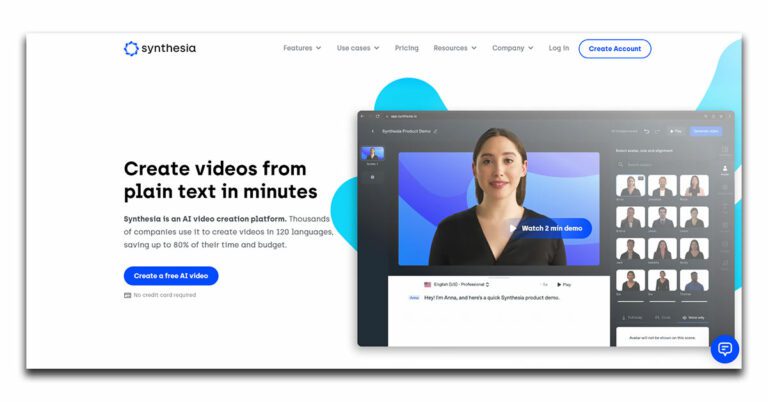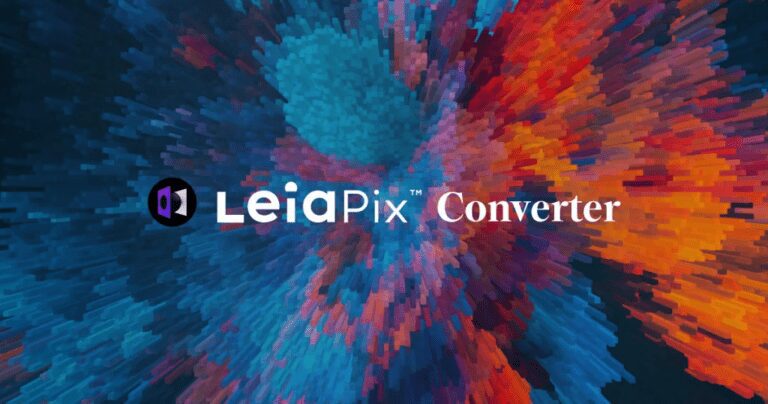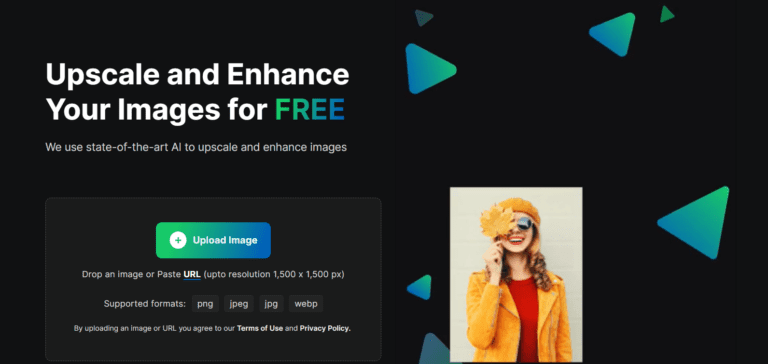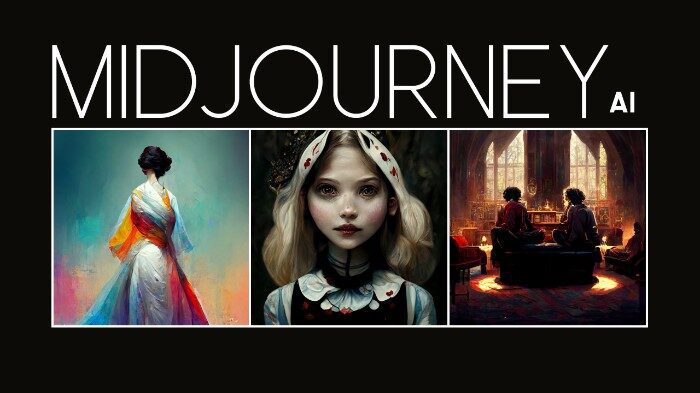How To Make AI Song Covers – Do you have a passion for music but feel limited by the traditional ways of creating it?
Artificial intelligence (AI) advances make beautiful song covers more straightforward and accessible than ever.
reimagine the song, offering a new interpretation that
With AI technology, anyone can produce captivating musical renditions for decades-old favorites or mix fresh new tunes right from home.
In this blog post, we’ll explore what AI song covers are and how you can use them to create unique works of art on your own.
Table of Contents
What is an AI Song Cover?

An AI Song Cover is a rendition of an existing song created using artificial intelligence tools and software.
Unlike traditional cover versions that require human musicians to interpret and perform a song, AI song covers use algorithms and machine learning to grasp the nuances of the melody, rhythm, and harmony.
They can then mimic or reimagine the song, offering a new interpretation that stays true to the original piece.
Whether reproducing the exact notes from a classical composition or creating a new arrangement of a pop hit, AI song covers can revolutionize music-making by providing accessible and innovative tools for musicians and non-musicians.
What are the Benefits of Using an AI Song Cover Generator?

Using an AI song cover generator comes with several benefits:
- Accessibility: AI music software is easy to use and doesn’t require any professional music training. It opens up the world of music production to those who might not have had the opportunity before.
- Creativity: AI can generate unique interpretations and arrangements of songs, pushing the boundaries of creativity and offering fresh perspectives on familiar pieces.
- Efficiency: AI song cover generators can analyze and reproduce music faster than human musicians, saving time and effort in music production.
- Flexibility: With AI, you can experiment with different genres, styles, and arrangements without requiring multiple instruments or performers.
- Learning Tool: For budding musicians, AI song cover generators can serve as educational tools, enabling them to understand musical structures and nuances.
Remember, while AI is an incredible tool for music production, it doesn’t replace human musicians’ emotional depth and artistic instinct.
It’s a tool that enhances and broadens the opportunities for musical creativity, but the human touch in music remains irreplaceable.
How to Make AI Song Covers – Step By Step Process
Step 1: Select the Right Software
The first step in creating an AI song cover is to choose the right software that suits your needs.
Several AI music platforms are available, each with unique features and capabilities.
Some popular options include OpenAI’s MuseNet, Aiva, Amper Music, Jukin, and Melodrive. When selecting your software, consider factors such as the genres it can handle, the complexity of the music it can generate, and its ease of use.
Take advantage of free trials and explore various platforms before making your choice.
Remember, what works for one person might not work for you, so finding software that aligns with your artistic vision and technical abilities is crucial.
Step 2: Choose Your Song
Choosing the right song is critical to creating an AI song cover.
It could be a song you love, a piece you’ve always wanted to reinterpret, or a composition you believe would benefit from an AI’s unique perspective.
Once you’ve chosen your song, input it into your AI software platform.
This typically involves manually uploading a MIDI file or inputting the song’s melody.
It’s essential to choose a song that aligns with the capabilities of your chosen AI software.
For instance, some software may excel at reproducing classical music, while others might be better suited for pop or electronic music.
Remember to respect copyright laws when choosing your song.
Step 3: Input the Song
Inputting the song into the AI software is an important step that sets the foundation for your AI song cover.
Generally, this involves uploading a MIDI file of the song, but the exact process may vary depending on the software you’re using.
A MIDI file is a universal music format containing the song’s notes, rhythms, and velocities but not the audio.
You can find MIDI files for most songs online or create one using music notation software if you have the necessary musical knowledge.
If your chosen AI software doesn’t support MIDI files, it may allow you to input the song’s melody manually.
This typically involves playing the melody on a virtual keyboard or notating it on a music staff within the software.
Remember to input the song as accurately as possible to ensure the AI can correctly analyze and reproduce the song.
Once the song is inputted, the AI software can start its job of understanding and interpreting the musical elements of the song.
Step 4: Set Parameters
Setting parameters is a pivotal step in creating an AI song cover.
In this step, you decide how the AI interprets the song.
Most AI music software allows you to set various parameters, including genre, instrumentation, tempo, and complexity. Here’s a brief rundown of what some of these parameters entail:
- Genre: This parameter determines the musical style of your AI song cover. You can choose to keep the original genre of the song, or you can experiment with different genres to create a unique interpretation.
- Instrumentation: This parameter defines the AI’s instruments to perform the song. You can choose from a library of virtual instruments provided by the AI software. You could reproduce the song with the same instruments as the original or select different instruments to give the song a fresh sound.
- Tempo: This parameter sets the speed at which the song is played. A faster tempo could make the song sound more energetic, while a slower tempo could give it a more relaxed feel.
- Complexity: This parameter determines how intricate the AI’s interpretation of the song will be. A higher complexity setting might result in more nuanced arrangements and harmonies, while a lower complexity setting could produce a simpler, more straightforward rendition of the song.
Once you’ve set your parameters, the AI will use them as a guide when generating your song cover.
Remember, you can constantly adjust these parameters and experiment with different settings until you achieve the sound you’re looking for.
Step 5: Generate the Cover
Once all parameters are set, generating your AI song cover is time.
This process is where the AI software takes the reins, analyzing the input song and using the set parameters to create a new rendition.
Depending on your software, this could be clicking a single button or following several prompts.
During this stage, the AI will arrange the notes, rhythms, and harmonies according to your selected genre, instrumentation, tempo, and complexity settings.
The result is a fresh, unique cover of your chosen song created by artificial intelligence.
Be patient—the generation process might take a few minutes, depending on your song’s complexity and your AI software’s capabilities.
Remember, you can constantly adjust the parameters if you are unsatisfied with the result.
Experimentation is vital to harnessing the full potential of AI music generation.
Step 6: Review and Edit
Reviewing and editing your AI-generated song cover is a crucial step in the process. This is your opportunity to ensure the AI’s interpretation aligns with your artistic vision.
Listen carefully to the generated music—does it capture the mood and feel of the original song? Pay close attention to the melody, harmony, and rhythm.
If there are sections that don’t quite hit the mark, most AI music software allows you to make adjustments.
You might be able to tweak the AI’s arrangements, change instruments, adjust the tempo, or even reselect the genre.
If substantive changes are required, don’t hesitate to revisit your parameters and regenerate the song cover.
Remember, creating an AI song cover is a collaborative process between you and the software.
It may take several iterations to achieve a result that satisfies you.
Patience, perseverance, and a keen ear for music will go a long way in this final stage.
Step 7: Export the Final Product
After thoroughly reviewing, editing, and being satisfied with your AI-generated song cover, the final step is to export the final product.
How you export your music will depend on the software you are using, but typically, you’ll find an option to ‘save’ or ‘export’ within the software’s menu.
When you click this, you’ll have the option to choose a file type.
Choosing a universally compatible file format like MP3 or WAV for audio files is recommended.
Once you’ve selected your file type, save your file in the desired location on your computer. Remember to give it a distinctive name to locate it later quickly.
After completing these steps, you will successfully create and export an AI song cover.
Congratulations on your achievement.
Now, you can share your unique creation with the world, whether that’s via social media, on a music-sharing platform, or with your friends and family.
Helpful Tips for Using AI Song Cover Generators
Here are a few helpful tips to keep in mind when using AI song cover generators:
- Experimentation is Key: Don’t hesitate to experiment with different parameter settings. You might be surprised by the unique musical ideas that emerge when you step outside your comfort zone.
- Understand Your Software: Learn about your AI software’s functionalities and features. The more you understand what your software can do, the more effectively you can utilize it to create compelling song covers.
- Patience Pays Off: Generating a song cover with AI can be time-consuming, especially if you’re aiming for a high level of complexity. Don’t rush the process. Allow the software ample time to do its job.
- Don’t Forget the Human Touch: While the AI is a powerful tool, it’s important to remember that it’s just that—a tool. Your human touch in setting parameters, reviewing, editing, and making creative decisions will make your song cover unique.
- Explore Different Genres: Don’t restrict yourself to one genre. You might discover that a pop song makes an exciting jazz cover or that a classical piece can be transformed into a compelling rock anthem.
- Share and Receive Feedback: Share your AI-generated song covers with others and be open to feedback. This can provide valuable insights and help you improve your future endeavors.
Remember, creating a song cover with AI is a journey of musical exploration. Enjoy the process and embrace the unique capability of AI to expand your creative horizons.
FAQs
Can I Make Money From AI-Generated Cover Songs?
Yes, it’s possible to make money from AI-generated cover songs, but there are a few crucial factors to consider.
Most importantly, you must ensure that you have the proper licensing to sell covers of another artist’s work, even if it’s been generated by AI.
Licensing laws vary by country, so it’s essential to understand your local regulations fully.
Typically, a mechanical license is required to sell cover songs. Secondly, the quality of the AI-generated song will largely influence its marketability.
It takes time, practice, and a keen musical ear to generate high-quality AI music that listeners will pay for.
Lastly, how you market and distribute your AI-generated music can significantly impact your earnings.
You could sell your music on online platforms, perform it live, use it in ad campaigns, or even license it to other artists or companies.
Be creative and explore multiple revenue streams to maximize your potential earnings.
Will I Get Copyrighted For Using AI-Generated Songs?
Yes, copyright issues can arise when using AI-generated songs, mainly if the AI software used to create the music draws upon existing copyrighted works during the generation process.
Copyright laws vary by jurisdiction, but generally, a song’s melody, lyrics, or distinctive musical elements may be protected by copyright, and usage without permission could lead to infringement claims.
Moreover, the legal landscape around AI and copyright is still relatively uncharted and can be complex.
It’s essential to consult with a legal expert or seek advice from the AI software provider to understand potential copyright implications.
Ensure you have all necessary permissions or licenses before publicly using AI-generated content.
Wrapping Up – How To Make AI Song Covers
In conclusion, creating an AI-generated song cover can be an exciting and rewarding experience.
This process blends the power of technology with human creativity to produce unique musical pieces.
However, it’s crucial to understand the intricacies of the software you are using and consider the legal aspects, particularly around copyright.
With patience, practice, and willingness to experiment, you can tap into AI music software’s endless creative possibilities.
Remember that the essence of music lies not only in the composition but also in the enjoyment it brings. So, enjoy the journey and happy music-making.
Hopefully, after reading this, you will understand How To Make AI Song Covers.
